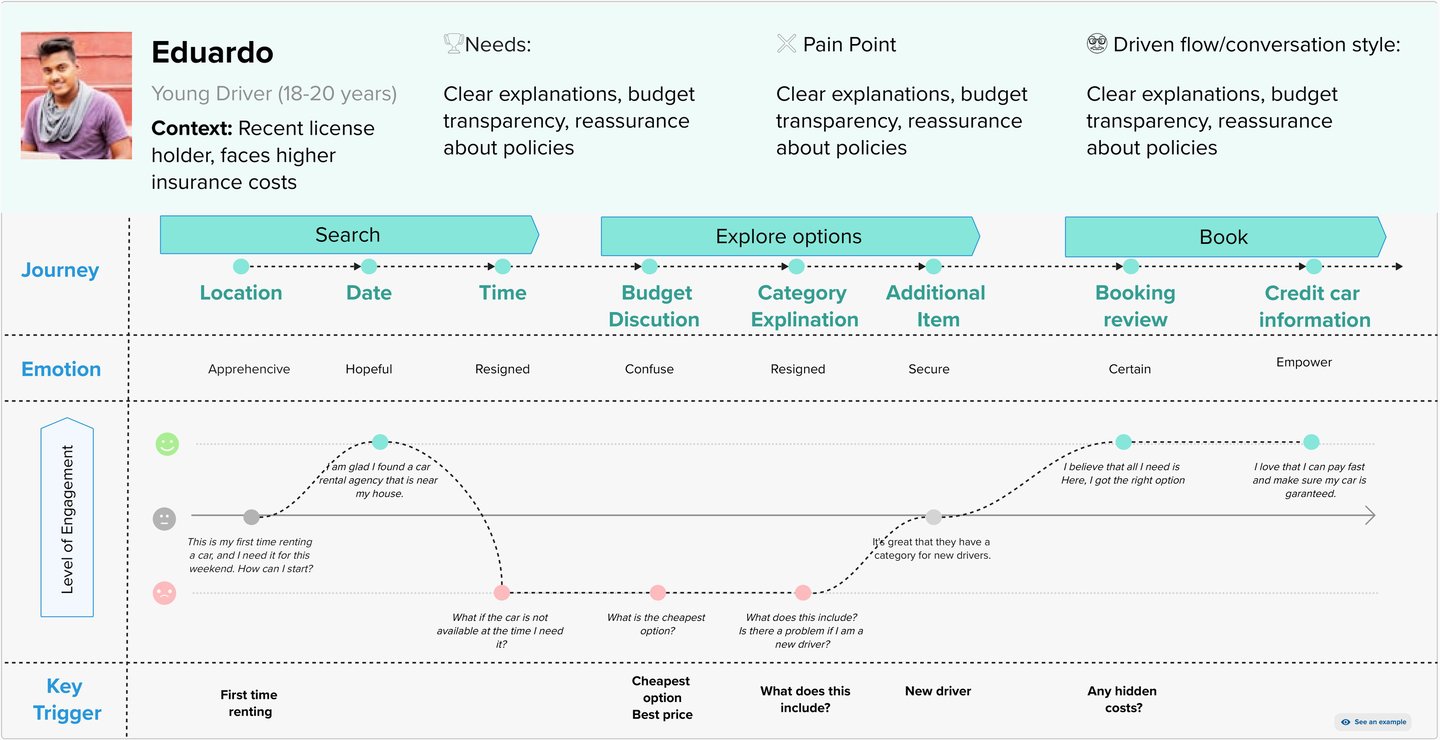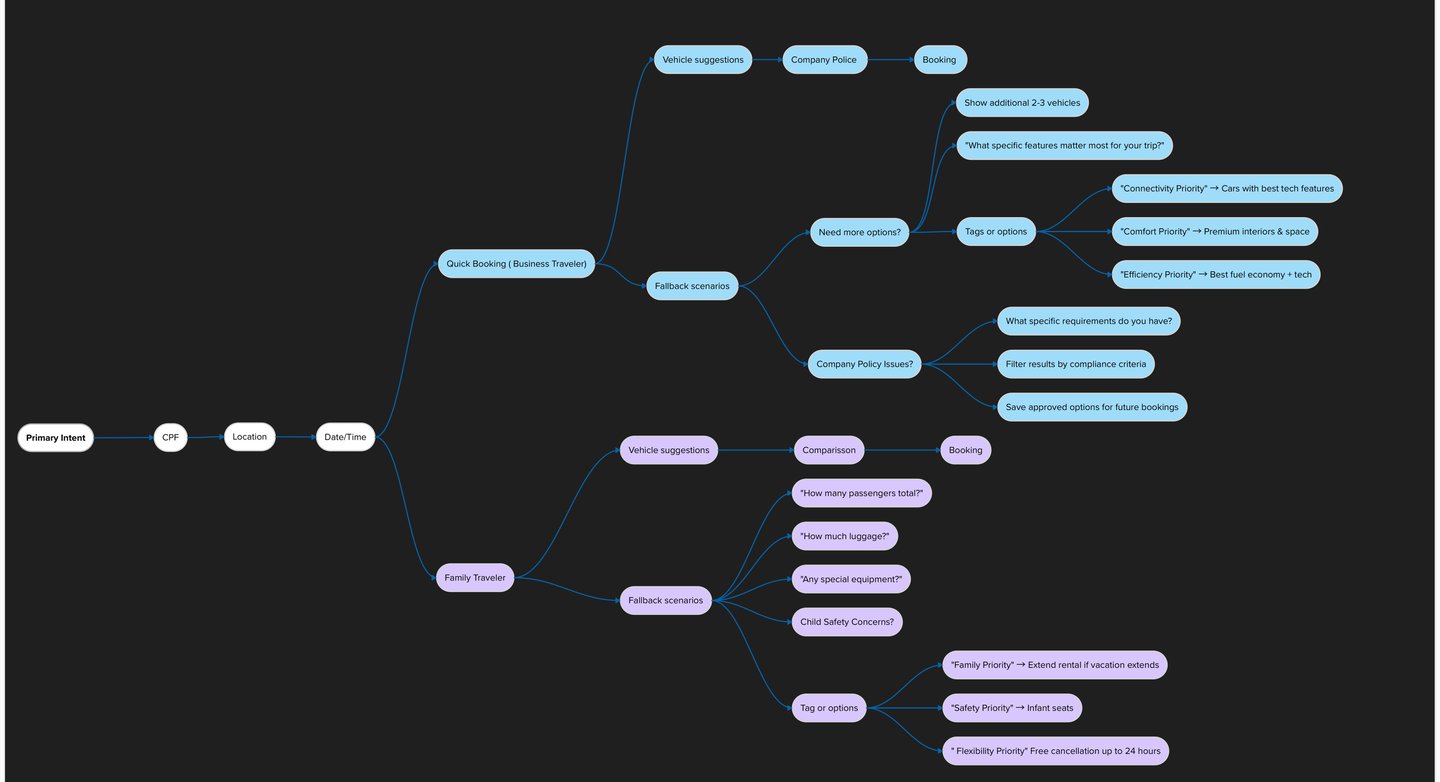SmartRent - Empowering users to take control of their car rental experience.
Design a conversational AI assistant for a car rental platform that could intelligently guide users through different rental scenarios - from quick business bookings to complex family vacation planning - while maintaining natural conversation flow and reducing booking abandonment.
Discovery → User research, journey mapping, persona definition
Design → Conversation flow architecture, prototype
Validate → User testing, stakeholder feedback
Services:
Sector:
Car Rental
Team:
Copilot, Claude (protopersonas), Miro (journey mapping), Figma (conversation flow prototypes)
Challenge:
Tools used:
4 months
Duration:
1 Product Designer (me), 2 Developers, 1 Product Lead, 1 Information Architecure
Proto-Persona Development Process
Given project timeline constraints, we adopted a strategic proto-persona approach leveraging existing knowledge and AI assistance:
Data Sources:
Project Lead's domain expertise and user insights
Historical booking pattern analysis
Competitive analysis of rental behaviors
AI-Assisted Research Method:
Used Claude and Copilot to synthesize available data into structured proto-personas, helping us:
Identify behavioral patterns from existing user data
Generate hypotheses about user motivations and pain points
Create detailed persona narratives based on real usage patterns
Validate assumptions against industry best practices
Discovery & Strategic Research
Profile Rental Scenario Example
🥸 Conversational profiles:
Educational Support (New Driver) - Requires explanation and reassurance
Comparative Guidance (Family Travel) - Needs detailed comparisons and recommendations
Simplified Navigation (Senior) - Benefits from patient, clear communication
Efficiency Focus (Business Traveller) - Values speed and business-oriented features
Insights & Behavioral Patterns
👉 Key Behavioral Patterns Identified:
Age-based communication preferences: Younger users accept a casual tone, seniors prefer a formal approach.
Context-driven information depth: Family trips require more detail than business bookings.
Insurance sensitivity varies significantly: Young drivers need explanation, business travelers need efficiency
Technology comfort levels: Younger users handle complex interfaces easily, while seniors need simpler, step-by-step guidance and quicker access to human support
Sample of profiles, flows, and fallback scenarios
👉 Marina, 35, planning a family vacation to Orlando with partner and two children (ages 3 and 7)
👉 Trip: 7-day vacation, arriving at Orlando airport
👉 Concerns: Safety for kids, luggage space, budget management, and entertainment for long drives
Scenario Context


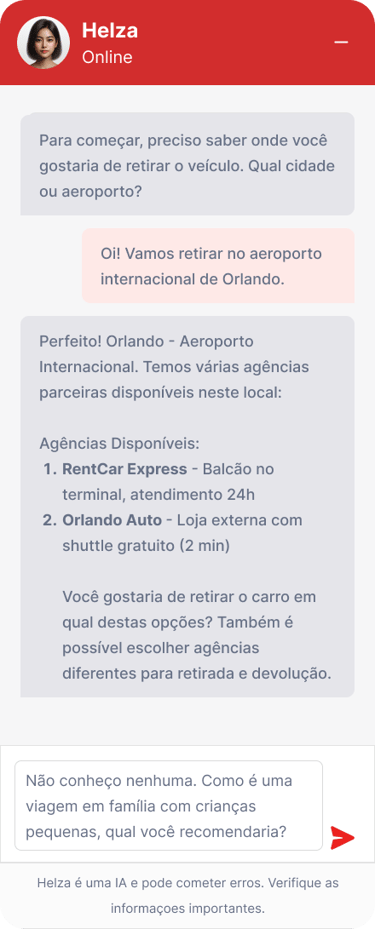
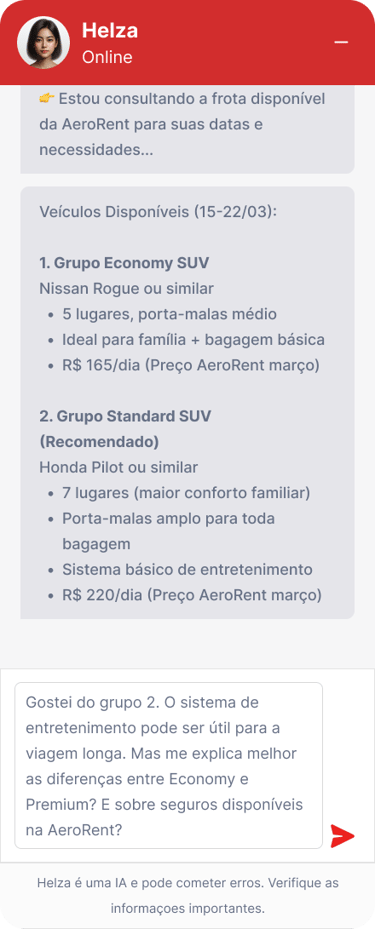
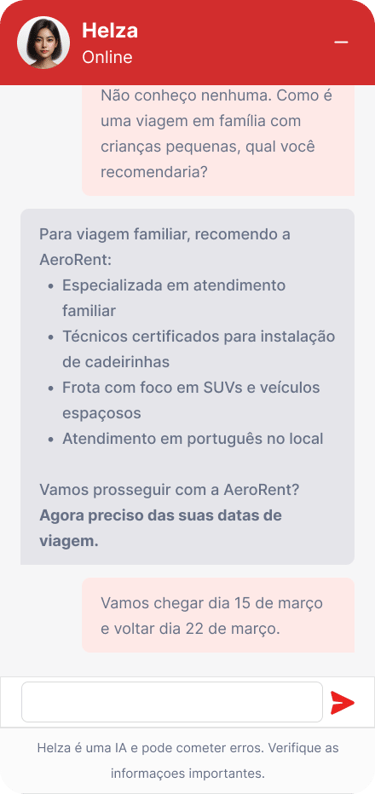







Learnings and next steps
💡 What I Learned
Designing for multiple user profiles doesn’t always mean multiple bots — sometimes, the best experience comes from simplicity and consistency, especially when dealing with generative AI and automation.
Collaboration with stakeholders is crucial when business logic challenges user expectations — aligning the design with both needs is where real impact happens.
The visual design, including subtle typographic details, has a significant impact on user navigation and understanding in conversational interfaces.
🌀Design Trade-offs & Strategic Decisions
While the initial proposal aimed to adapt tone and flow based on each user profile, we chose to consolidate the conversational tone to a more neutral and direct style, ensuring the same bot experience could serve diverse user needs without confusion.
Business constraints required us to prioritize a flow start before recommending vehicle options. This sequencing reduced early personalization but ensured the solution aligned with operational requirements and system integrations.
Emphasizing key actions in bold text was a lightweight but impactful tactic to improve clarity, especially for first-time or less tech-savvy users.
📈 Future Metrics & Optimization Plan
Although I transitioned off the project before we conducted quantitative validation. We had outlined some next steps to measure and optimize the experience:
Conversation Completion Rate: Percentage of users who complete the booking process through the assistant without escalation to a human agent.
User Satisfaction Score: Post-interaction feedback using a quick thumbs-up/thumbs-down or a 5-point scale.
Fallback Effectiveness: Measure how often fallback flows recover the conversation versus ending in failure or hand-off.

